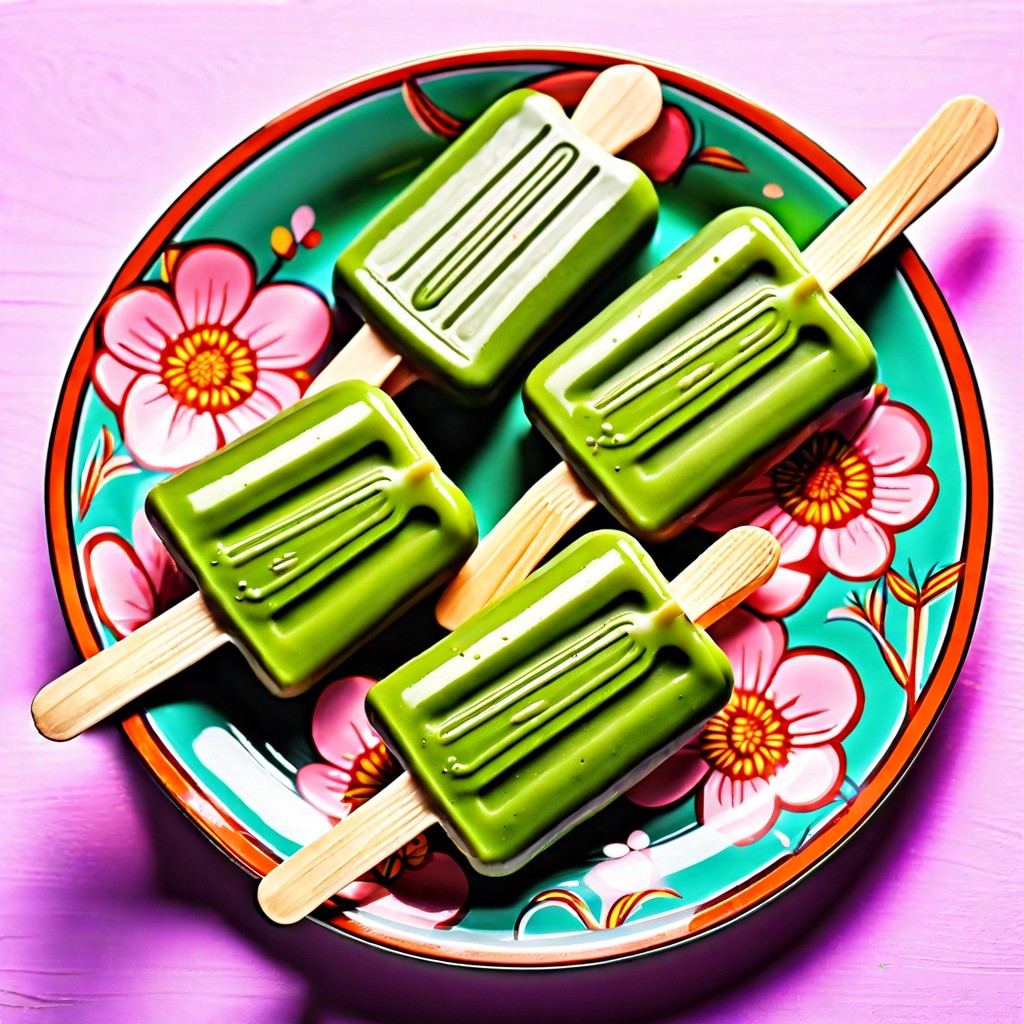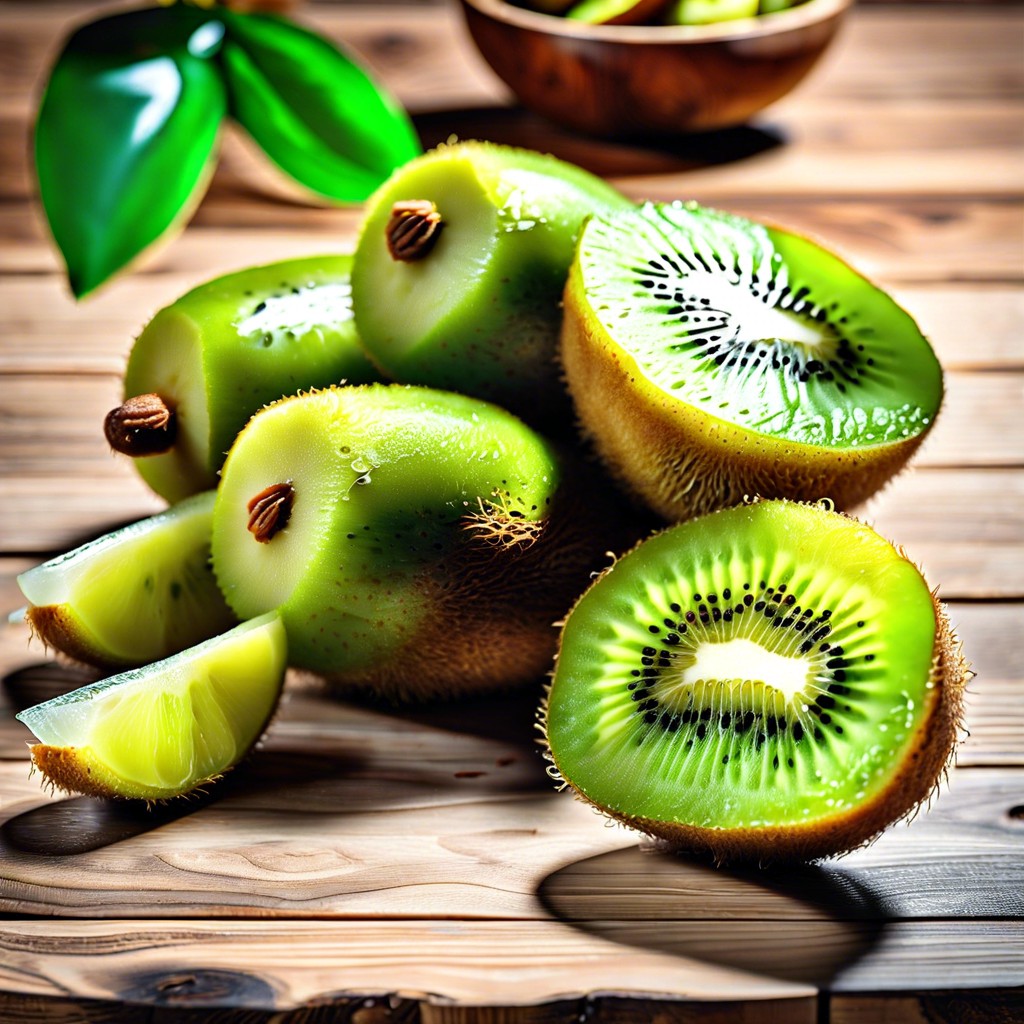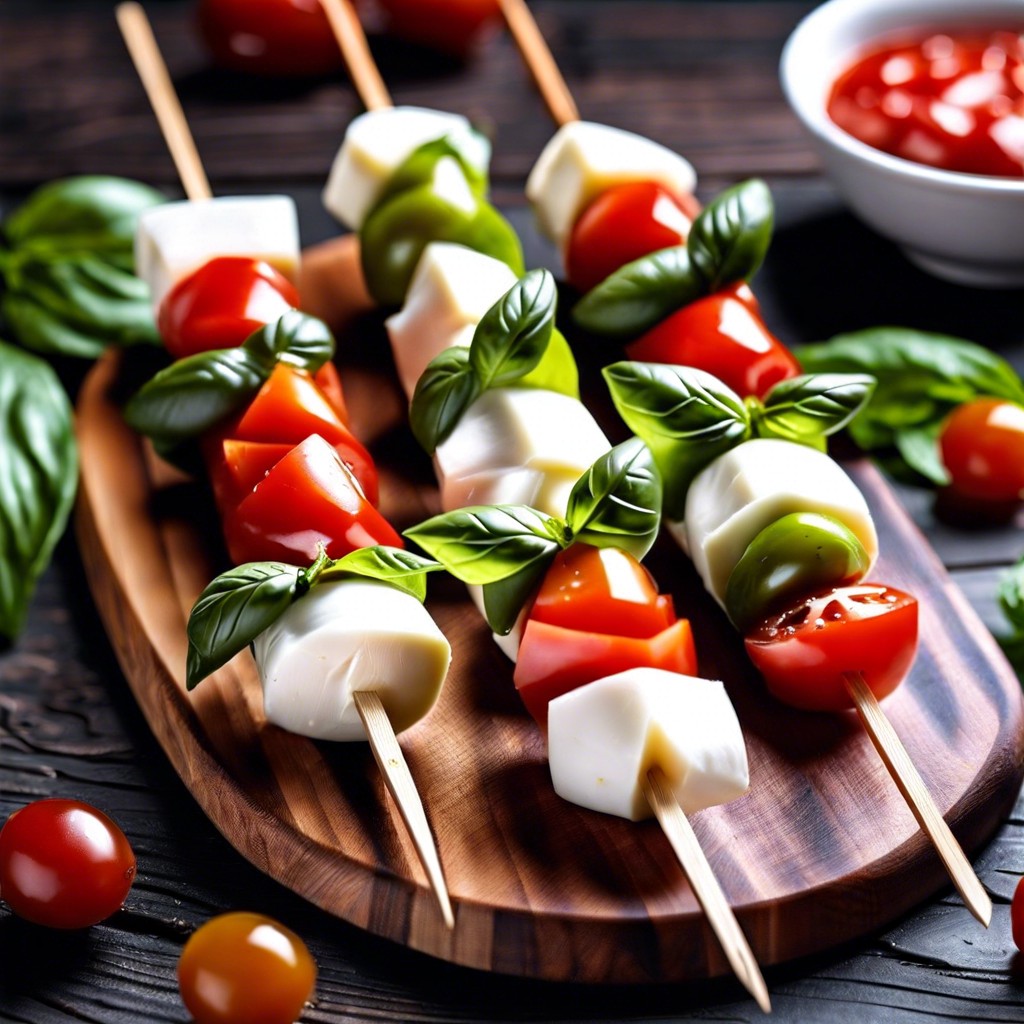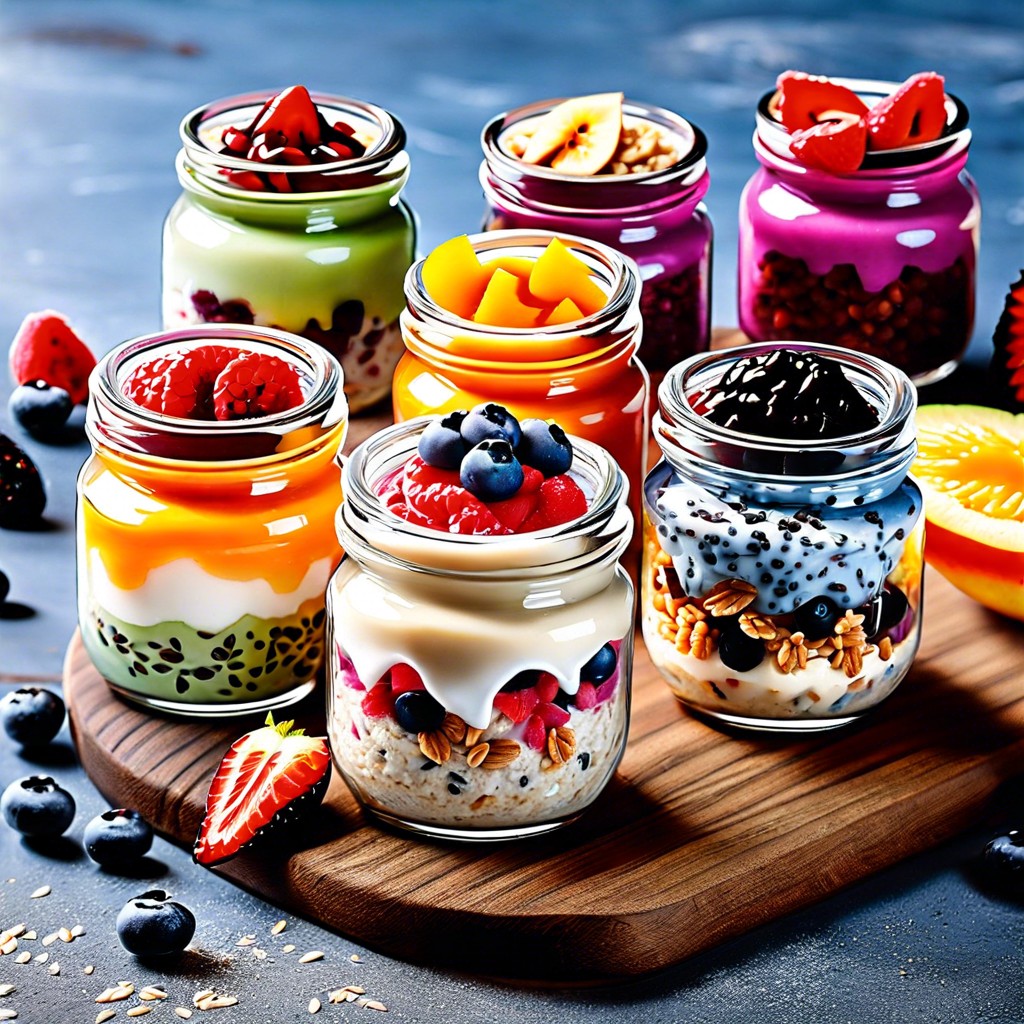Discover the art of creating a visually appealing and mouthwatering snack board that will satisfy your cravings and impress your guests.
Snack boards are all the rage these days, and for good reason! They’re not only visually stunning, but they also offer a variety of delicious snacks that everyone can enjoy. Whether you’re hosting a party or just looking for a fun way to jazz up your snack game at home, snack boards are the perfect solution.
But how do you make one? In this article, we’ll guide you through everything you need to know to create the ultimate snack board that will impress your guests and satisfy your cravings. So grab some snacks and let’s get started!
Choosing a Board
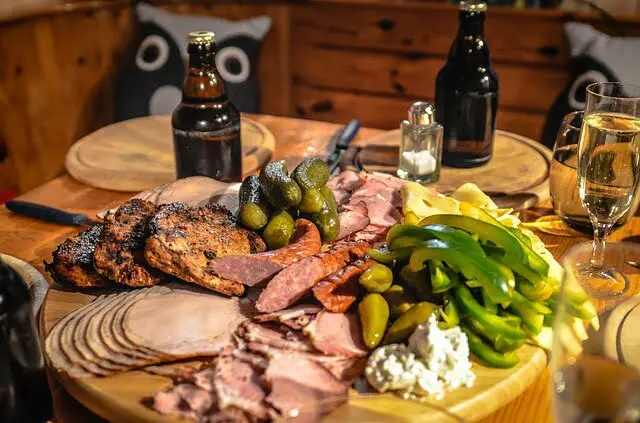
The size and shape of your board will depend on how many people you’re serving and what type of snacks you plan to include. A wooden cutting or charcuterie board works well for most snack boards, but don’t be afraid to get creative with different materials like slate, marble or even ceramic.
When choosing your board, consider the color scheme of your snacks and select a complementary background that will make them pop. If you’re going for an earthy vibe with lots of greens and browns, choose a natural wood grain finish; if bright colors are more your style then opt for something white or brightly colored.
Selecting the Theme
The theme will help guide your selection of snacks and create a cohesive look on the board. You can choose any theme that suits your occasion or personal preference, such as Italian-inspired, Mediterranean-style, or even just an all-cheeseboard.
When selecting a theme for your snack board, consider the occasion and who will be enjoying it. For example, if you’re hosting a game night with friends who love spicy food then opt for Mexican-themed snacks like guacamole and salsa with tortilla chips.
Another way to choose themes is by color coordination; this works well when creating boards for holidays like Christmas where reds and greens are prominent colors in decorations.
Assortment of Cheeses
It’s versatile, delicious and can be paired with a variety of other snacks on the board. When selecting cheeses for your snack board, aim for a mix of textures and flavors to keep things interesting.
Consider including soft cheeses like brie or camembert that are creamy in texture and pair well with fruits or crackers. Harder aged cheeses such as cheddar or gouda provide more depth in flavor while blue cheese adds tanginess to the mix.
Don’t forget about goat cheese which has become increasingly popular due to its unique taste profile that pairs well with honey drizzled over top.
To make sure everyone can enjoy the assortment of cheeses on your snack board, consider offering both mild and strong options so there’s something for every palate.
Variety of Meats
You can choose from cured meats like prosciutto, salami or chorizo, or go for cooked meat such as sliced turkey breast and ham. It’s important to have a variety of textures and flavors on your board so that everyone can find something they enjoy.
Consider adding some spicy pepperoni slices or tangy pastrami to balance out the milder flavors of other items on the board. If you’re feeling adventurous, try incorporating some exotic meats like bison jerky or wild boar sausage.
Don’t forget about vegetarian options too! There are plenty of plant-based meat alternatives available in stores now that would be perfect for a snack board. Think veggie deli slices made from tofu or seitan.
Remember to slice all your meats thinly so they’re easy to pick up with crackers and won’t overpower other items on the board.
Incorporating Crackers
They provide the perfect base for cheese and meat pairings, as well as dips and spreads. But with so many options available, how do you choose which crackers to include on your board?
Firstly, consider the flavor profile of your other snacks. If you have bold cheeses or spicy meats on your board, opt for plain or lightly salted crackers that won’t overpower those flavors.
Next up is texture – mix things up by including both crispy and crunchy options like water crackers or rice cakes alongside more substantial choices such as whole wheat or seeded varieties.
Don’t be afraid to get creative! Consider incorporating flavored cracker options like rosemary-infused crisps or black pepper wafers that will add an extra layer of depth to your snack spread.
Fresh Fruit Selection
Not only do fruits add a pop of color and freshness to your board, but they also provide a healthy option for snacking. Some popular choices include sliced apples, grapes, strawberries, blueberries and raspberries.
You can also incorporate tropical fruits like pineapple or mangoes for an exotic twist.
It’s important to consider the season when choosing which fruits to include on your snack board as well as their ripeness level. For example in summer you might want juicy watermelon slices while in winter you may opt for citrusy oranges or pomegranate seeds.
To make sure that all of the fruit is ripe and ready-to-eat on serving day be sure purchase them at least two days before assembling your snack board so they have time to fully ripen if needed. Remember that presentation is key! Cut larger pieces into bite-sized portions so guests can easily grab what they want without making a mess or having difficulty eating it off the skewer (if using).
Vegetables for Crunch
Not only do they provide a healthy option for snacking, but they also complement the other items on the board. Some great options for crunchy veggies include carrots, celery, bell peppers, snap peas and radishes.
To make your vegetable selection even more appealing to guests of all ages and tastes buds alike try adding some variety in texture by including raw or blanched broccoli florets or cauliflower pieces as well as sliced cucumbers or jicama sticks.
Don’t forget about dips! Hummus is always a crowd-pleaser but consider offering something different like tzatziki sauce made with Greek yogurt which pairs perfectly with fresh cut veggies.
Nuts and Seeds
They add texture, flavor, and nutrition to the mix. When selecting nuts for your board, consider a variety of options such as almonds, cashews, pistachios or walnuts.
For seeds try pumpkin or sunflower seeds.
To make them more interesting you can roast them with spices like cinnamon sugar or chili powder for an added kick of flavor.
You can also include nut butters on your snack board by serving it in small bowls alongside sliced fruits like apples and pears.
Remember that some people may have allergies so be sure to label which nuts are included on the board if they contain allergens such as peanuts.
Dips and Spreads
They add flavor, texture, and variety to the mix. When selecting dips and spreads for your snack board, consider a range of options that cater to different tastes and dietary restrictions.
Hummus is a classic dip that pairs well with vegetables such as carrots, cucumbers or bell peppers. Guacamole is another popular option that goes great with tortilla chips or pita bread.
If you’re looking for something more savory, try adding some cheese dips like queso or spinach artichoke dip which can be served warm on the board itself.
For those who prefer sweet flavors on their boards try incorporating fruit jams like fig jam paired with brie cheese spread over crackers.
Small Bites and Appetizers
These bite-sized treats can be anything from mini sandwiches, skewers, or even deviled eggs. The key is to keep them small enough that they don’t take up too much space on the board but still pack a flavorful punch.
When selecting small bites for your snack board, consider incorporating different textures and flavors. For example, you could include some savory options like bacon-wrapped dates or prosciutto-wrapped melon balls alongside some sweet options like chocolate-covered strawberries or fruit skewers drizzled with honey.
Another fun idea is to create themed small bites based on the occasion or season. For example, during Halloween time you could make spooky-themed snacks such as mummy hot dogs wrapped in crescent rolls or spider deviled eggs decorated with black olives.
Sweet Treats
They add a touch of sweetness and balance out the savory flavors. When selecting sweet treats for your snack board, consider adding a variety of options to cater to different tastes and preferences.
Fresh fruit is always a great option for those who prefer healthier snacks. You can include sliced apples, grapes, strawberries or even some dried fruits like apricots or figs.
If you’re looking for something more indulgent, chocolate-covered pretzels or popcorn are perfect choices that will satisfy your sweet tooth without being too overwhelming.
Cookies and brownies also make great additions to any snack board. You can either bake them yourself or purchase pre-made ones from the store if you’re short on time.
Garnishing the Board
Garnishing is an essential step in creating a visually appealing snack board. It adds color, texture, and flavor to your presentation.
Fresh herbs like rosemary or thyme can be used as garnish for cheese or meat sections of the board. They not only look beautiful but also add a subtle aroma that complements the flavors of other ingredients.
Fruits such as berries or grapes can be placed around dips and spreads for added color contrast while sliced citrus fruits like lemons or oranges are perfect additions to seafood selections.
Edible flowers such as pansies, nasturtiums, violets are great options too! Not only do they look pretty but they also provide unique flavors depending on their variety.
Remember not to overdo it with garnishes; less is more when it comes to decorating your snack boards. Keep in mind that everything should still be edible after adding these final touches!
Arrangement Techniques
The way you place your items can make a big difference in how visually appealing and accessible they are for guests. Here are some arrangement techniques to consider:
1. Start with larger items: Begin by placing larger items such as cheese blocks or bowls of dips on the board first.
2. Create sections: Divide the board into sections based on food type (e.g., meats, cheeses, fruits) or color scheme.
3. Use small bowls and ramekins: These can be used to hold dips, nuts or seeds while keeping them separate from other foods.
4. Add height variation: Varying heights add visual interest and help create depth in your display; use cake stands or small boxes under plates/bowls if needed.
5. Fill gaps with smaller bites: Use smaller bites like grapes, berries or olives to fill any empty spaces between larger pieces of food.
6. Garnish for added flair – Sprinkle herbs over cheese blocks; add edible flowers around fruit clusters; drizzle honey over nuts/seeds etc.
Pairing Drinks
When selecting drinks, consider the theme of your board and choose options that complement the flavors of your snacks. For example, if you’re serving a charcuterie board with salty meats and cheeses, opt for a dry red wine or crisp white wine to balance out those flavors.
If you’re hosting an outdoor party on a hot day, consider offering some chilled beer or sparkling water infused with fresh fruit slices. For sweet snack boards featuring desserts like cookies and chocolates, pair them up with coffee or tea.
Don’t forget about non-alcoholic options as well! Lemonade or iced tea can be great choices for summer-themed boards while hot cocoa works perfectly during winter months.
Accommodating Dietary Restrictions
Whether they’re vegetarian, gluten-free or lactose intolerant, there are plenty of options available that will cater to their needs.
For vegetarians and vegans, you can include plant-based protein sources such as hummus or nut butter dips. You can also add roasted vegetables like bell peppers and zucchini for added flavor and texture.
If you have guests who are gluten-free or have celiac disease, make sure to choose crackers that are labeled as gluten-free. You can also incorporate rice cakes or sliced cucumbers instead of traditional crackers.
For those who cannot consume dairy products due to lactose intolerance or allergies, opt for non-dairy cheese alternatives made from nuts like cashews. Fresh fruit is always a great option for those with dietary restrictions since it’s naturally free from common allergens.
Size and Serving Suggestions
The amount of food you need will depend on the number of guests and the occasion. For a small gathering or intimate date night, a smaller board with fewer items may suffice.
However, for larger parties or events, you’ll want to opt for a bigger board with more variety.
As far as serving suggestions go, it’s best to have one large central board that everyone can gather around and share from. If your guest list is particularly long or if space is limited on your table or counter top then consider having multiple smaller boards placed strategically throughout the room.
It’s also important to keep in mind that not all guests will eat everything on the board so be sure there are enough options available for everyone’s taste buds! A good rule of thumb is 3-4 ounces per person when planning out how much food you’ll need.
Seasonal Snack Boards
Whether it’s pumpkin spice in the fall or fresh berries in the summer, there are endless possibilities for creating a snack board that reflects the season.
For example, during autumn you can add roasted nuts, caramel apples and pumpkin-flavored treats to your board. In winter months you can include warm dips like spinach-artichoke dip or hot cocoa with marshmallows on top.
Springtime calls for fresh fruits such as strawberries and kiwis while summertime is perfect for watermelon slices, grilled corn on cob bites and refreshing lemonade.
Hosting a Snack Board Party
Hosting a snack board party is an easy and fun way to entertain your guests while also providing them with delicious snacks. To host a successful snack board party, start by selecting the theme of your board and choosing the appropriate size based on the number of guests you’ll be hosting.
Next, consider incorporating some small bites and appetizers that will complement your main snack board. This could include items like deviled eggs or bruschetta that can be served alongside dips or spreads.
When it comes to drinks, keep it simple with options like water, soda or beer. You can also offer wine pairings if you want to take things up a notch.
Don’t forget about presentation! Arrange your snacks in an aesthetically pleasing manner on the board(s) and add garnishes such as fresh herbs or edible flowers for extra flair.
Storage and Clean-up
To keep your snack board fresh for longer, wrap each item separately in plastic wrap or aluminum foil before storing them in airtight containers. This will prevent cross-contamination and help maintain their freshness.
When it comes to cleaning up the board itself, start by removing any remaining food items with a spatula or scraper. Then wipe down the board with warm soapy water using a soft sponge or cloth.
Avoid soaking wooden boards as this can cause warping and splitting.
For tougher stains or odors on wooden boards, sprinkle some coarse salt onto the surface and rub gently with half of a lemon until clean. Rinse thoroughly with water afterward.
Proper storage and cleaning are essential for maintaining your snack board’s longevity while also ensuring that you’re serving safe food at all times!
FAQ
What are the essential components to create a well-balanced snack board?
A well-balanced snack board should include a variety of proteins, carbohydrates, healthy fats, fruits, and vegetables.
How can you make a visually appealing snack board with various textures and colors?
To create a visually appealing snack board with various textures and colors, include an assortment of cheese, fruits, veggies, meats, nuts, and crackers, arranged artistically to complement each other’s hues and shapes.
What are some creative ways to incorporate different dietary restrictions and preferences into a versatile snack board?
To accommodate various dietary restrictions and preferences, create a versatile snack board by offering an array of plant-based, gluten-free, and dairy-free options alongside traditional choices to satisfy everyone’s palate.
